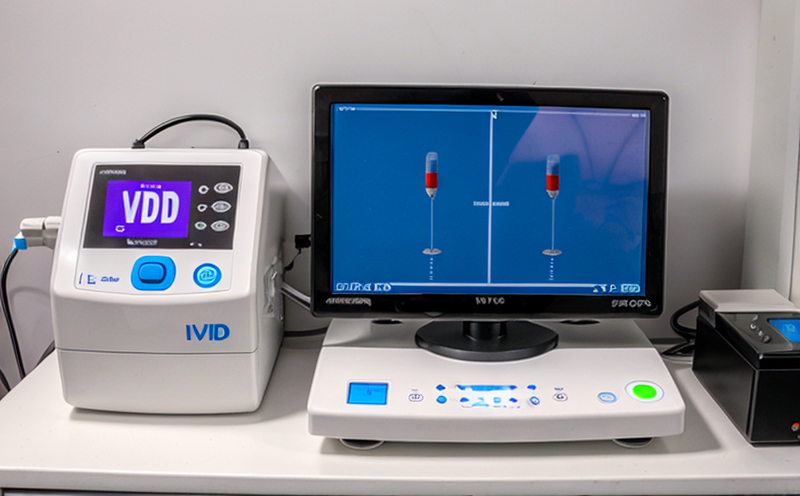IEC 61010 Electrical Safety Testing for IVD Instruments
The International Electrotechnical Commission's (IEC) Standard IEC 61010-1, titled "Electrical safety of electrical equipment in medical practice," is a crucial document that ensures the safe use and operation of medical devices, including In Vitro Diagnostic (IVD) instruments. This standard provides guidelines for assessing the electrical safety of medical devices to prevent hazards such as electric shock, fire, or injury.
The IEC 61010-1 standard is widely recognized in the global healthcare industry and is often a requirement by regulatory bodies like the US Food and Drug Administration (FDA) and European Medical Device Regulation (EU MDR). Compliance with this standard ensures that an IVD instrument meets stringent safety requirements, enhancing patient safety and confidence.
The testing process outlined in IEC 61010-1 involves several key steps:
- Visual Inspection: This step includes checking the device for any visible signs of damage or wear that could compromise its electrical integrity.
- Functional Testing: Ensures that all functions operate as intended and do not present an electrical hazard.
- Insulation Resistance Testing: Measures the resistance between different parts of the device to ensure adequate insulation is maintained.
- Ground Fault Protection: Checks if the ground fault protection system is functioning correctly to prevent electric shock.
- Overcurrent Protection: Ensures that overcurrent conditions are detected and handled appropriately.
- Voltage Testing: Determines whether the device operates within safe voltage limits.
- Mechanical Stress: Simulates potential mechanical stresses to which the device might be exposed, ensuring it remains safe under these conditions.
Compliance with IEC 61010-1 is essential for medical devices that are used in a variety of healthcare settings, including hospitals, clinics, and laboratories. By adhering to this standard, manufacturers can ensure their products meet the highest safety standards, thereby reducing risks associated with electrical malfunctions.
The testing process not only protects patients but also safeguards healthcare workers who interact with these devices daily. In addition to reducing the risk of injury or harm, compliance with IEC 61010-1 contributes significantly to the reputation and trustworthiness of the manufacturer in the medical community.
Why Choose This Test
- Regulatory Compliance: Ensure your device meets regulatory requirements for electrical safety, which is essential for market entry.
- Patient Safety: Protect patients from potential hazards such as electric shock or fire by adhering to the highest safety standards.
- Brand Reputation: Demonstrating compliance with international standards enhances your brand's reputation and builds trust among healthcare professionals and consumers.
- Risk Management: Identify and mitigate risks associated with electrical malfunctions, thereby reducing potential liabilities.
- Technical Expertise: Our team of experts ensures that the testing process is carried out according to the latest IEC standards, providing accurate and reliable results.
- Efficiency: Streamline your product development and compliance processes by integrating electrical safety testing into your quality control strategy.
The rigorous nature of IEC 61010-1 ensures that any potential electrical hazards are identified early in the design phase, allowing for timely corrections and improvements. This proactive approach not only enhances the overall product quality but also reduces the time and cost associated with post-market recalls or failures.
Quality and Reliability Assurance
The IEC 61010-1 standard plays a vital role in ensuring the reliability and safety of electrical medical devices, particularly those used in In Vitro Diagnostic (IVD) instruments. The testing process outlined in this standard is designed to identify any potential hazards that could arise from electrical issues within the device.
Quality assurance through IEC 61010-1 involves a comprehensive approach that includes not only electrical safety but also mechanical stress and functional testing. This multi-faceted approach ensures that each component of the IVD instrument operates as intended, contributing to overall product reliability.
During the testing process, we use state-of-the-art equipment and follow internationally recognized standards to ensure accuracy and consistency in our results. Our experienced team of engineers and technicians is dedicated to providing precise and reliable data, which are essential for making informed decisions about your device's performance and safety.
The results of IEC 61010-1 testing not only meet regulatory requirements but also exceed industry expectations, ensuring that your product is safe and effective. By adhering to these stringent standards, you can be confident that your IVD instrument will perform reliably in real-world conditions, contributing to better patient outcomes.
Environmental and Sustainability Contributions
- Eco-friendly Manufacturing: Our testing processes are designed with environmental sustainability in mind. We use energy-efficient equipment and practices that minimize waste and reduce our carbon footprint.
- Reduced Waste: By ensuring compliance early in the design phase, we help manufacturers reduce the need for post-market recalls or redesigns, thereby minimizing waste and resource consumption.
- Ethical Sourcing: We work closely with suppliers to ensure that all materials used in testing are ethically sourced, promoting responsible business practices.
- Energy Efficiency: The equipment we use is energy-efficient, reducing the overall environmental impact of our operations.
The IEC 61010-1 standard not only focuses on electrical safety but also plays a role in contributing to sustainable development. By ensuring that medical devices are safe and reliable, we help healthcare providers make more informed decisions, ultimately leading to better patient care and outcomes.
Our commitment to environmental sustainability extends beyond our laboratory practices. We actively participate in industry-wide initiatives aimed at reducing the environmental impact of medical device manufacturing and use. Through collaboration with other stakeholders, we contribute to a greener and more sustainable future for healthcare.





